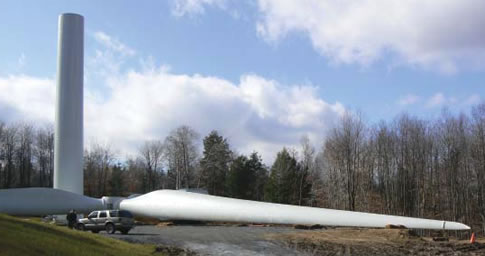As Europe sets ambitious targets for energy that is clean and inexhaustible, wind energy is predicted to meet approximately 25 percent of Europe’s power demand within 25 years. Today’s wind turbines measure 70–150 meters and feature bladed rotor diameters of 100 meters or more, translating into a swept air area of 8,000–10,000 square meters. Wind turbines convert wind power into bladed rotor mechanical torque and subsequently into 1.5 to 4 MW of electrical power.

Figure 1: When standing in front of a wind turbine, its impressive size
is striking.
…
Add new comment